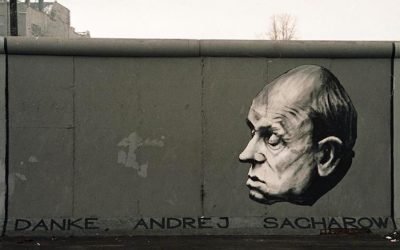The experience of war is changing Russian society, deforming attitudes towards death.
Oleg Reut
Photo: The “problematic” memory of the dead is inconvenient primarily for politicians speaking on behalf of the state. Photo by Alexander Sinn on Unsplash
How We Talk about the War
Two years into the special military operation, certain rules have been developed for talking about war.
These rules differ in many respects for those Russian researchers who remain in Russia—for example, continuing field research—and for those who have relocated or emigrated, choosing academic freedom for themselves. The differences are increasingly noticeable during discussions between these two groups of Russians when they meet at online conferences or at increasingly rare offline events.
However, there is one sphere in which the languages of description and explanation remain practically unchanged by current circumstances. This is Death Studies.
What Are Death Studies?
Talking about death remains an effective way to talk about the war and its human dimension. Obituaries and death announcements in the media and on social networks are almost the only way to obtain data on losses.
To a certain extent, thanatopolitics—the field that studies the management practices of the state in relation to death and dead bodies—has replaced actual politics. People observed how the state “seeks to appropriate people’s bodies” over two weeks in February 2024, when death politics affected not only the relatives and friends of Alexei Navalny, but also hundreds of thousands of his supporters.
Death Studies is an interdisciplinary field in which research stems from questions that are important for the development of science or have practical significance. Death Studies includes many different spheres of study:
- from classical anthropology with an emphasis on ritual practices to studies of the representation of death in the media
- from studying corruption in funeral homes and cemeteries to analyzing the evolution of honorary burial sites in provincial Russian cities
- from exploring ideas about the afterlife to investigating the obituaries plastered on social media pages
One can find studies that are fundamentally different from each other—in terms of their research traditions, models of description and explanation, and narrative language—under one interdisciplinary umbrella.
How are the dead commemorated?
Who determines who should be remembered and how?
What elements of the past should be forgotten?
What does death tell us about society?
What does death tell us about the future?
Answers to these questions are sought not only by those who study death, but also by specialists in social anthropology, political science, public history, and sociology—everyone who studies the processes of reassembling the interaction between the living and the dead.
Death in War
Death in the war has been for most Russian researchers a dead-end topic inaccessible as an area of study. To a large extent, researchers have had to rely on open sources, use qualitative methods, and “speak with caution” when presenting the material due to the ban on using the word “war” and using unofficial sources.
Remembering the dead has justifiably been classified as “problematic.”
To Remember or to Forget
The topic of death, while remaining both attractive and frightening for modern Russian society, has been included in the discussion of current events. Moreover, the research traditions of death studies are used to identify, describe, and explain the diversity of practices for perceiving and dealing with death.
Attention has been paid not only to the problems of individual reflection on death, processing grief, and the work of mourning, but also to the issues of changing previous models of commemoration—what is subject to being remembered and what is forgotten.
A shift in attention is only logical. First, the heads of Russian regions have become agents of glorification, briefly informing the public about the deaths of their fellow countrymen on their official social media pages. Second, news of individual and collective funerals now comes almost daily.
These changes, which altered the dynamics of attitudes toward death in general, occasioned a shift in the lenses used for research.
Attitudes toward Death Are Changing
With the end of the military hostilities, the ways that people are commemorated will obviously change again. In many applied respects, they will become more complicated and, most likely, return to the private sphere.
In the meantime, the military conflict has brought death into the public sphere. Death is now out in the open and largely deprivatized; it cannot be considered “quiet and modest”—and, therefore, as “proper” (“good”)—the way it is in peaceful conditions, when death occurs at a respectable age surrounded by loved ones.
The experience of war, with its huge number of casualties and immense suffering during death, is changing Russian society before our eyes. Popular attitudes toward death have become deformed.
- Spontaneous, ill-kempt graveyards are popping up everywhere.
- The meticulous requirements for reporting and registering deaths are being shirked.
- Mourning rituals, procedures, and religious rites are abridged and sometimes completely neglected. Often, they are merely symbolically indicated, for example by reading a prayer.
- The expression of grief is undergoing changes, leading to a forced minimization of feelings.
- At burial sites, regional identities are constructed in new ways and new social hierarchies are built.
Death as a Life Purpose
The discourse surrounding death clearly demonstrates that today, the symbols that grow out of the practices of dealing with death perform significant functions in the formation of political culture. The semantic centers of the official memorial narrative focus (exclusively) on the subject of dying, and death in war is the main nodal point when shifting into the collective memory.
This is confirmed, in particular, by a well-known statement made by the Russian president at a meeting with mothers of the victims:
Some people live and some people do not—it’s not always clear, and how they go—from vodka or something else—is unclear, but then they do go. Whether they lived or did not also passes by unnoticed. But your son lived, understand? His goal was achieved. This means that he didn’t die in vain.
This view of death as the purpose of one’s life reflects the ideas of the Russian political class not only about individuals and the limits of their capabilities, but also about the mode of interaction between the government and society: fulfill your duty, even if it leads to a violent death.
Here we see the origins of the attitude toward the dead and the culture of grief and mourning. These are what form the conceptual core of the official memorializing narrative.
The Annexation of Memory
Social conceptions of death during the war are inseparable from the memory infrastructure that has developed in the country.
Attitudes toward death in war are constructed as the basis for uniting communities. The right to interpret the recent traumatic past is not just limited but completely prohibited. Memories are annexed. Our own minds spontaneously strive to complicate memories and develop a polysemy—but such efforts encounter politically organized and mobilized opposition.
One illustration of this comes from Vladimir Putin’s New Year’s address:
This was a year that put many things in their place, clearly separated courage and heroism from betrayal and cowardice […] Russian military personnel, militias and volunteers are now fighting for their native land, for truth and justice, for reliable guarantees of peace and Russia’s security. They are all our heroes.
Recorded at the headquarters of the Southern Military District before 2023, the New Year’s address deformed the ritual: for the first time, the military stood behind the president. The speech was aimed at ideological mobilization, excluding any symbolic constructions that could leave death up for interpretation, appropriation, or contestation.
Shifting Norms
From the first day of the military operation, violent death—as opposed to “civilian” death—ceased to be perceived as an exceptional, extraordinary, isolated event. The feeling of loss repeatedly reflected on social media had the effect of depriving people of the psychologically significant work of grief through traditional mourning of the deceased, speaking, expressing one’s grief to others, “relieving the soul,” and reciprocal consolation.
This ritual has been minimized to the extreme, even as the cult of war has been mediatized.
This shifting norm is constantly tested by gruesome online testimonies of deaths and news stories in which viewers observe that the impersonalized dead are ignored, as if people do not notice them. The daily front-line news, the fatalism, and all accompanied by a certain indifference across all media sites.
This is when psychological defense mechanisms are triggered. Distancing oneself from the death of others, from realizing the ultimate horror of everyday death, protects one from projecting the fate of those who have died onto oneself. These mechanisms became more visible in September 2022, when the “partial mobilization” took place.
At the same time, the official memorial narrative states that death on the battlefield should be viewed as a feat, and grief for the fallen should be compensated with a sense of pride in them. This is clearly evident in the speeches of regional and municipal politicians, who demonstrate an emotional attention deficit when considering their fallen fellow countrymen.
For all the neutrality of the term “special military operation,” this choice has made it impossible to refer to the war as “large” and/or a “people’s” war. This decision has not affected any meaningful assessment of the tragedy, nor its actual scale, but it has meant that the mass deaths have been officially reduced to individual losses.
The daily reports of deaths and funerals have made it impossible to abandon commemorating the dead altogether. However, no official decisions on commemoration formats have been made. The “problematic” memory of the dead is inconvenient primarily for politicians speaking on behalf of the state.
The “Collective Soldier”
The emerging memorial practice is not isolated from symbolic or ritual experience. This experience is associated with such straightforward and “naive” signs of identity as, for example, the “Eternal Flame” and “Tomb of the Unknown Soldier” complexes located throughout Russia. They serve to provide collective remembrance.
Whereas the canonical phrase “Your name is unknown. Your feat is immortal” was characteristic of memorials to those killed during World War II, the current memorial discourse taking shape before our eyes is qualitatively different. If the concept of the “unknown soldier” is aimed at isolating the hero from the mass, then the current funerals of fallen servicemen make known the names of the dead, but there is no “collective soldier.”
The narrative in obituaries focuses exclusively on presenting deaths in the course of the special operation as “isolated incidents”—not the rule, but an exception.
* * *
It would be appropriate to assume that any large-scale commemoration is lagging behind. The war is the main nodal point of the current narrative, which has not yet moved into the collective memory.
However, spontaneous commemoration, aimed at preserving the memory of the heroes in the public consciousness, could not wait. As the September 2022 mobilization began, it was intended to reaffirm a sense of unity and community, strengthening ties within society.
The process of forming and transforming the image of violent death during the special military operation within the public consciousness was marginalized through the normalization of the situation with the help of the media.
This was what translated and continues to translate the commemoration to an individual level.





0 Comments